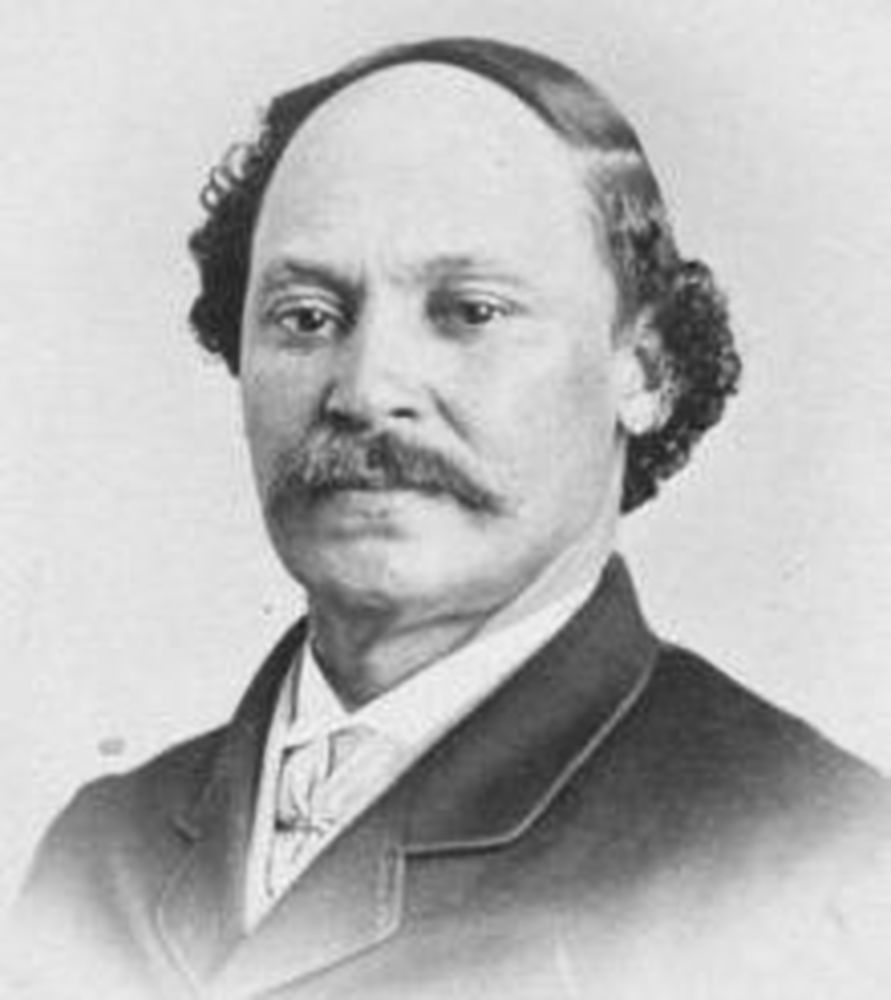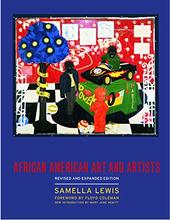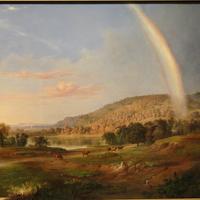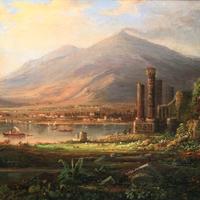More about Robert Seldon Duncanson
- All
- Info
- Shop
Works by Robert Seldon Duncanson

Contributor
Robert S Duncanson was born a free man, but that didn’t stop him from using his art to work towards the freedom of his fellow African Americans elsewhere in the country.
Duncanson was born in 1821 in Fayette, NY. His father was a carpenter and house painter and Duncanson grew up with a paintbrush in his hand while helping his father with his work. Before he attended traditional art school, Duncanson taught himself how to draw by copying prints and creating still lifes and portraits. His big break came in 1848 when he was commissioned by anti-slavery activist Charles Avery to paint a landscape of Cliff Mine on Lake Superior. Soon after, he became life-long friends with landscape painter William Sonntag. Sonntag introduced him to the world of landscape painting and invited Duncanson to join the Hudson River School, which specialized in landscapes.
Duncanson’s career took flight when Nicolas Longworth, one of the richest men in the country at the time and an abolitionist, commissioned him to paint eight landscape murals in the main hall of his mansion, which is now the Taft Museum of Art in Cincinnati. The murals took the young artist two years to complete. By giving this momentous project to him, Longworth essentially gave Duncanson his stamp of approval and whipped open endless doors of opportunity for the artist. In 1841 at the age of 20, the artist became exhibiting in Cincinnati. The city of Cincinnati was the perfect place to foster his budding art as in the 1800s it was called the “Athens of the West.” A decade later he was financed by an Ohio based abolitionist organization to take a one year tour of Europe.
Duncanson’s first trip to Europe proved to be an extremely influential point in his life. He was constantly sketching during the year-long trip and he continued to draw off of those sketches to create larger landscapes for years to come. He spent a considerable amount of time in England and there he fell in love with the work of Claude Lorrain and Joseph Mallord William Turner (god, that’s a mouthful). The trip invigorated Duncanson and he was not daunted by the glamour and sophistication of the European artists. He wrote, “Of all the landscapes I saw in Europe (and I saw thousands) I do not feel discouraged.”
The artist must have caught the travel bug; as Duncanson spent just over two decades on the road, mostly abroad. It is imagined that he most likely left due to the tumultuous environment in America during the Civil War which raged from 1861 to 1865. Even though he was born a free man, letters and statements from friends revealed that Duncanson faced a tremendous amount of stress and hardship as he was the first famous black painter in the United States.
In 1867, two years after the war had ended, the artist returned to America. He had spent much of his time abroad in Scotland where he had meticulously sketched a multitude of landscapes from the area. The paintings he created from these sketches were insanely popular in the States and this marked the height of his career.
In the late 1860s to early 1870s, Duncanson became quite ill and began to exhibit signs of early onset dementia. By the 70s much of his behavior was erratic, marked with fits and delusions, such as his belief that his body had become possessed by a dead artist. From this point on, he began to get increasingly sick and in 1872 he was hospitalized for three months due to ‘emotional illness.’ It was found later that this illness was most likely due to lead poisoning. His artwork towards the end reflected the violence and unpredictability of his moods, like his series of paintings of the New England and Irish coasts which appear to be set during storms. In 1872, at the age of 51, Duncanson died due to unknown health complications.

Contributor
Robert S. Duncanson is a critically important name in the history of the United States, because he is one of our greatest (and most underrated) artists, and is also the first African-American painter to gain international recognition.
The system of transatlantic slavery brought Duncanson's grandpa, Charles Duncanson, to the East Coast and, shortly after the American Revolution, Charles Duncanson emancipated himself and moved North to New York with his son, John Dean, and his son's wife, Lucy, who had emancipated themselves in Virginia. After Charles died, John Dean Duncanson emerged as a brilliant house painter and carpenter, and moved his large family to Monroe, on the edge of Lake Erie, in a place that was not yet the state of Michigan. In Monroe, under the tutelage of his dad and brothers, Robert Duncanson blazed through each of the graduated stages of apprenticeship in house painting and decoration. In those days, everyday people were more like Renaissance artists, with expert proficiency in a wide variety of areas. By the age of seventeen, Duncanson had skills in "gilding, plastering, hanging wallpaper, and painting interior decorations, in addition to exterior house, coach, and sign painting."
Three of Duncanson's brothers, Simeon, John Dean, and Nathan, also worked as artisan painters, although the fifth brother, William, was mentally unable to work, and Duncanson himself, in the last years of his life, would also be unable to work due to dementia, and what may have been schizophrenia. The late Joseph D. Ketner II proposes that this was connected with the poisonous effects of white lead paint. Lead poisoning may have been what killed Caravaggio and Jay DeFeo's health problems may have also been due to exposure to toxic lead in her art materials.
Opening his painting business with a partner, Robert Duncanson placed an ad in the Monroe Gazette: "A NEW FIRM, John Gamblin and R. Duncanson, Painters and Glaziers, beg leave to acquaint their friends and the citizens of Monroe and its vicinity, that they have established themselves in the above business and respectfully solicit patronage." The partnership lasted barely a year, and Duncanson left for Mt. Healthy, near Cincinnati, where he taught himself fine art painting by making portraits, life drawings, and copies of prints. Influenced by a local show of Thomas Cole's work, the beautiful Ohio River Valley became Duncanson's inspiration, and writers recognized him as one of the greatest landscape painters on either side of the Atlantic.
In the U.S., people almost always called Duncanson "Negro," "colored," or "Mulatto," but when he traveled to Canada, Europe, and the U.K., people rarely mentioned his race. This is partly because whiteness as a personal identity category was often secondary to nationality outside of the U.S. A century after Duncanson, writers somehow decided that his middle name was "Scott," some kind of reference to possible Scottish ancestry and famous portrayals of Scottish landscapes, and this rumor found a place in some of the most prestigious records of his life. Additionally, recent publications, including the Wall Street Journal, report that his father was a Scots-Canadian, although Ketner published evidence in a biography almost thirty years earlier showing that Duncanson's ancestry, according to Census data, was Black on Both Sides, as Mos Def would put it. Nobody knows Duncanson's exact birth date, although Ketner estimates that it was in 1821.
Sources
- Bryc, Katarzyna, Eric Y. Durand, J. Michael Macpherson, David Reich, and Joanna L. Mountain. " The Genetic Ancestry of African Americans, Latinos, and European Americans across the United States." American Journal of Human Genetics 96, no. 1 (2015): 37-53
- Driskell, David. Two Centuries of Black American Art. New York: Knopf, 1976.
- Ketner II, Joseph D. "Robert S. Duncanson." TFAOI, May 19, 2011, http://tfaoi.org/aa/9aa/9aa554.htm.
- Ketner II, Joseph D. The Emergence of the African-American Artist: Robert S. Duncanson, 1821-1872. Columbia, MO: University of Missouri Press, 1994.
- McLendon, Jacquelyn Y. "'Reading' the Pastoral in the Art of Robert S. Duncanson." International Review of African American Art, http://iraaa.museum.hamptonu.edu/page/-%27Reading%27-the-Pastoral-in-th…-.
- "Robert S. Duncanson: The Spiritual Striving of the Freedman's Son Exhibition Highlights Work of Ohio Landscape Artist." ArtfixDaily, Apr. 6, 2011, http://www.artfixdaily.com/artwire/release/8783-robert-s-duncanson-the-…-
- Wilmerding, John. "Reflections on the American Landscape." The Wall Street Journal, Sep. 25, 2010, https://www.wsj.com/articles/SB10001424052748703556604575502081408169148.
Featured Content
Here is what Wikipedia says about Robert S. Duncanson
Robert Seldon Duncanson (c. 1821 – December 21, 1872) was a 19th-century American landscapist of European and African ancestry. Inspired by famous American landscape artists like Thomas Cole, Duncanson created renowned landscape paintings and is considered a second generation Hudson River School artist. Duncanson spent the majority of his career in Cincinnati, Ohio and helped develop the Ohio River Valley landscape tradition. As a free black man in antebellum America, Duncanson engaged the abolitionist community in America and England to support and promote his work. Duncanson is considered the first African-American artist to be internationally known. He operated in the cultural circles of Cincinnati, Detroit, Montreal, and London. The primary art historical debate centered on Duncanson concerns the role that contemporary racial issues played in his work. Some art historians, like Joseph D. Ketner, believe that Duncanson used racial metaphors in his artwork, while others, like Margaret Rose Vendryes, discourage viewers from approaching his art with a racialized perspective.
Check out the full Wikipedia article about Robert S. Duncanson













